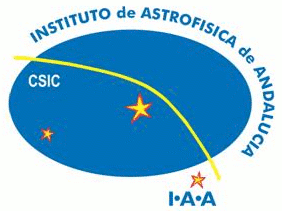Both space and laboratory plasmas offer a wealth of observational data with which to test existing, and inspire new, physical theories. These data are multipoint in space and extended in time. The challenge is often that the spatial sampling points are not uniformly spatially distributed and are moving w.r.t. the plasma-current system under observation, and the plasma-current system itself is non-linear and highly dynamic. This talk will present approaches to quantifying spatio-temporal coherence and synchronization and their application in space and laboratory plasmas. The first of these is the auroral current system which is observed by the SuperMAG set of over a hundred ground based magnetometers. The dynamics of this current system reflect the dynamical response of the earth’s magnetosphere to solar wind driving where energy is stored and then released in a bursty manner (substorms). Spatio-temporal patterns of correlation between the magnetometer time series can be used to form a dynamical network [1], the properties of the network can then be captured by (time dependent) network parameters. This offers the possibility of characterizing detailed spatio-temporal pattern by a few parameters, so that many events can then be compared [2] with each other and with theoretical predictions. The evolution of patterns of short-range and long-range connections establishes a sequence of propagation of spatio-temporal correlation, the question is then to what extent this can be identified with causality? The second example is from large-scale tokamak experiments for magnetically confined fusion (JET and ASDEX/AUG). When in high confinement regimes, these plasmas release energy and particles in a non-linear, bursty manner via Edge Localized Modes (ELMs). Diagnostics that capture the global non-linear dynamics of the plasma have been found to become localized in signal phase in the time interval just before the ELMs occur, even whilst the signal amplitude is small [3,4]. These signals can also become completely phase-synchronized. Again, a question of causality arises, do these global signals simply track the dynamics of the ELM, or are they an active part of the underlying non-linear physics?
[1] J. Dods, S. C. Chapman, and J. W. Gjerloev, Network Analysis of Geomagnetic Substorms Using the SuperMAG Database of Ground Based Magnetometer Stations, J. Geophys. Res., 120, doi:10.1002/2015JA021456 (2015)
[2] Characterising the Ionospheric Current Pattern Response to Southward and Northward IMF Turnings with Dynamical SuperMAG Correlation Networks, J. Dods, S. C. Chapman, J. W. Gjerloev, JGR submitted (2017)
[3] S. C. Chapman, R. O. Dendy, T. N. Todd, N. W. Watkins, F. A. Calderon, J. Morris, and JET Contributors, The global build-up to intrinsic ELM bursts seen in divertor full flux loops in JET, Phys. Plasmas 22, 072506 (2015)
[4] S. C. Chapman, R. O. Dendy, P. T. Lang, N. W. Watkins, F. Calderon, M. Romanelli, T. N. Todd and JET Contributors, The global build-up to intrinsic ELM bursts and comparison with pellet precipitated ELMs seen in JET, Nucl. Fusion, 57, 022017, (2017)
S C Chapman






